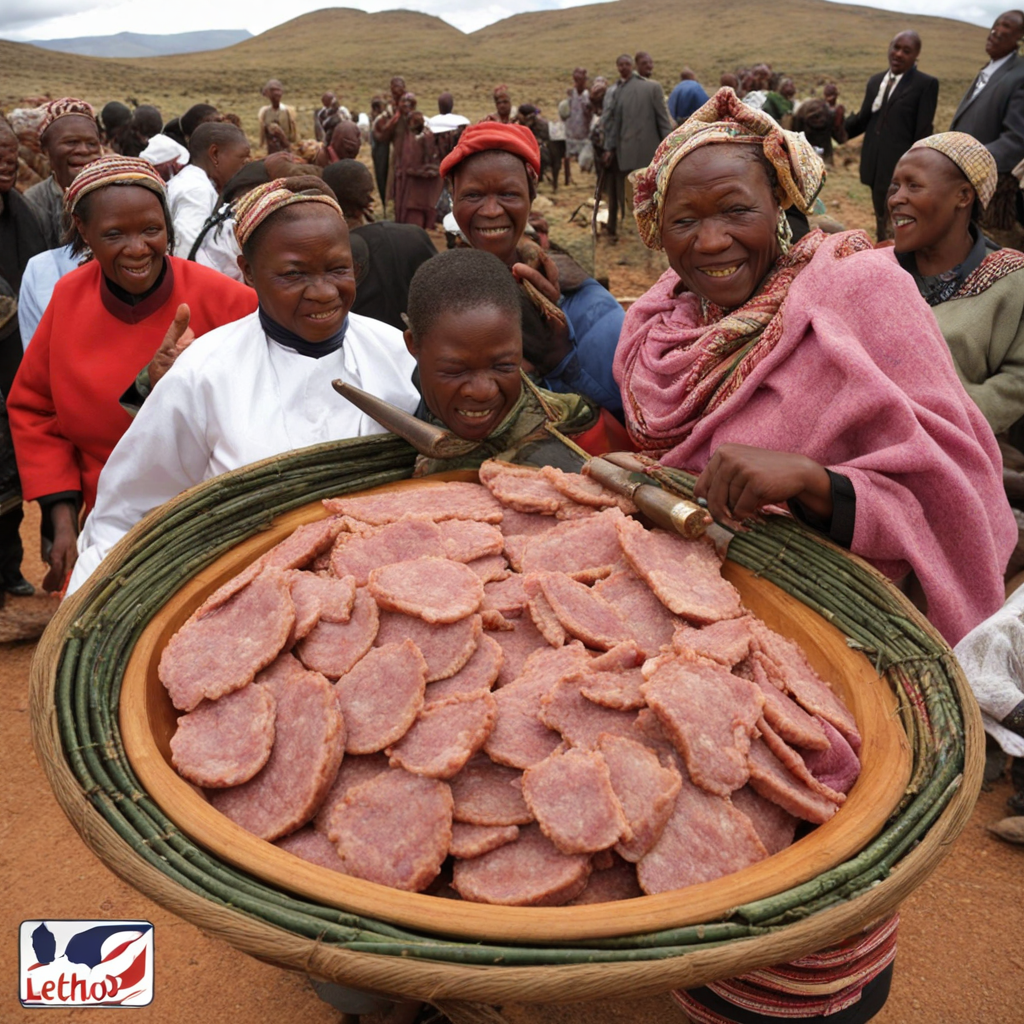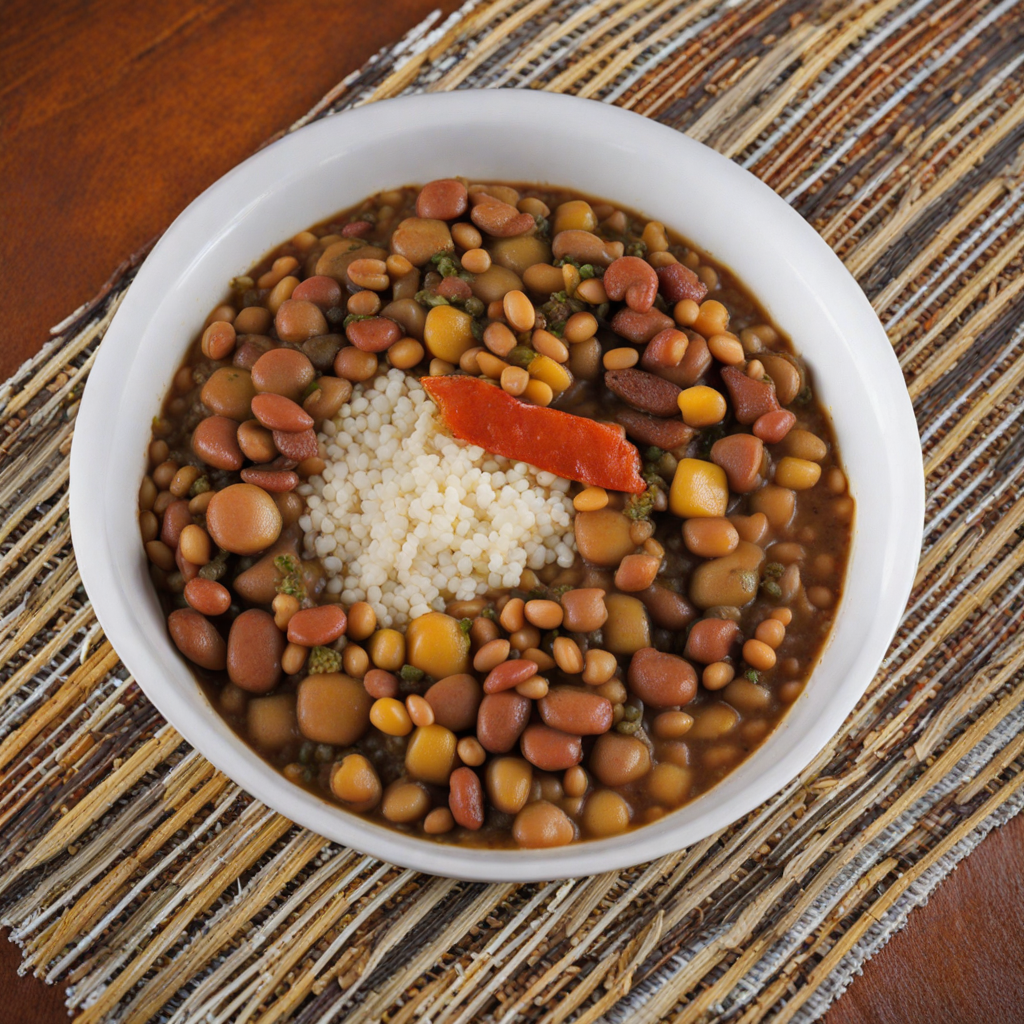Seswaa
Seswaa is a traditional dish from Lesotho that showcases the hearty flavors and rich culinary heritage of this mountainous nation. At its core, Seswaa consists of tender, slow-cooked meat, typically beef or goat, that is seasoned with minimal yet impactful spices. The meat is boiled until it reaches an exquisite level of tenderness, often cooked with just salt, and sometimes a hint of black pepper, allowing the natural flavors to shine through. This simplicity in preparation highlights the quality of the ingredients, as the dish is often made with locally sourced meats that reflect the pastoral lifestyle of the Basotho people. Once the meat is fully cooked, it is shredded or pounded into smaller pieces, resulting in a dish that is both savory and succulent. Seswaa is often served with a side of pap, a type of stiff porridge made from maize meal, which serves as a perfect accompaniment to soak up the delicious juices of the meat. The combination of the rich, flavorful meat and the comforting, starchy pap creates a satisfying and nourishing meal that is enjoyed by many. In Lesotho, Seswaa is not just a meal; it is a dish that is often reserved for special occasions, such as weddings or communal gatherings, reflecting its significance in the local culture. The communal aspect of enjoying Seswaa is equally important, as it embodies the spirit of sharing and togetherness that is central to Basotho traditions. For someone looking to explore new flavors, indulging in Seswaa offers a unique opportunity to experience the essence of Lesotho's culinary landscape, showcasing the beauty of simplicity and the depth of flavor that can be achieved with minimal ingredients.
How It Became This Dish
Origins of Seswaa Seswaa is a traditional dish originating from the mountainous kingdom of Lesotho, situated in Southern Africa. This hearty stew is primarily made from beef, though variations may include goat or lamb, and is characterized by its rich flavor and tender texture. The preparation of Seswaa is deeply rooted in Basotho culture, reflecting their pastoral lifestyle and reliance on livestock. Historically, Seswaa was prepared during significant events such as weddings, funerals, and other communal gatherings, symbolizing a feast for the community and a display of hospitality. The dish's origin can be traced back to the Basotho people, who have long been cattle herders. Cattle are not only a source of food but also hold great cultural significance, often serving as a measure of wealth and status. The practice of cooking Seswaa is intertwined with the Basotho's cultural rituals, where the act of preparing meat for a gathering signifies unity and celebration among families and clans. The communal aspect of this dish emphasizes the importance of sharing food as a means of strengthening social bonds. Cultural Significance In Basotho culture, Seswaa is much more than just a meal; it is a symbol of identity and heritage. The preparation and consumption of Seswaa are often accompanied by songs, stories, and traditions that have been passed down through generations. During important ceremonies, such as the initiation of young men or the celebration of a newborn, Seswaa is served as a mark of respect and acknowledgment of life transitions within the community. The dish also plays a role in Basotho social customs. For instance, when a family receives guests, serving Seswaa is a way to honor them, showcasing the host's generosity and the importance of community ties. The preparation of Seswaa often involves a collaborative effort, where family and friends come together to cook and share in the experience, reinforcing relationships and community spirit. Ingredients and Preparation The traditional preparation of Seswaa involves slow-cooking the meat until it becomes tender and easily shreds apart. The meat is typically seasoned with salt, and in some cases, spices like black pepper or garlic may be added for flavor. The dish is often cooked in a large pot over an open fire, which not only enhances its flavor but also adds to the communal cooking experience. Accompanying Seswaa is usually a staple food such as pap (a type of maize porridge) or potatoes, which serve as a base to absorb the rich juices of the stew. The combination of tender meat and hearty starches creates a fulfilling meal that satisfies both hunger and the soul. In modern times, variations of Seswaa may include vegetables, reflecting changing dietary preferences and the influence of globalization on traditional cooking. Development Over Time As Lesotho has evolved over the years, so too has the preparation and consumption of Seswaa. The influence of modernization and urbanization has led to changes in how the dish is prepared and enjoyed. In urban areas, where access to traditional cooking methods may be limited, some families have adapted the recipe to fit contemporary lifestyles, using pressure cookers or slow cookers to reduce cooking time while still maintaining the dish's essence. In addition to its traditional role in celebrations and gatherings, Seswaa has found its way into restaurants and eateries across Lesotho and neighboring countries. This commercialization of the dish has helped introduce Seswaa to a wider audience, allowing it to become a point of cultural pride for the Basotho people. Chefs and home cooks alike continue to honor traditional recipes while experimenting with new ingredients and techniques, showcasing the versatility of this beloved dish. Seswaa in the Global Context The growing interest in global cuisines has brought attention to traditional African dishes like Seswaa, paving the way for cultural exchange. Food festivals, culinary events, and social media have enabled the Basotho people to share their culinary heritage with a broader audience, creating opportunities for food tourism in Lesotho. Tourists visiting the country often seek out authentic experiences, with Seswaa being a highlight of their culinary journey. Furthermore, the dish has become a symbol of resilience and identity for the Basotho, especially in the face of challenges such as climate change and economic shifts. Cattle farming, a cornerstone of the Basotho economy, faces threats from environmental factors, but the cultural significance of Seswaa often inspires communities to adapt and innovate while preserving their culinary traditions. Conclusion In essence, Seswaa is a dish that encapsulates the spirit of the Basotho people, representing their history, culture, and communal values. Its preparation and enjoyment reflect the importance of food as a means of connecting individuals and fostering a sense of belonging. As Lesotho continues to navigate the complexities of modernity while holding onto its rich traditions, Seswaa remains a cherished culinary emblem, illustrating the power of food to unite and celebrate heritage across generations.
You may like
Discover local flavors from Lesotho







